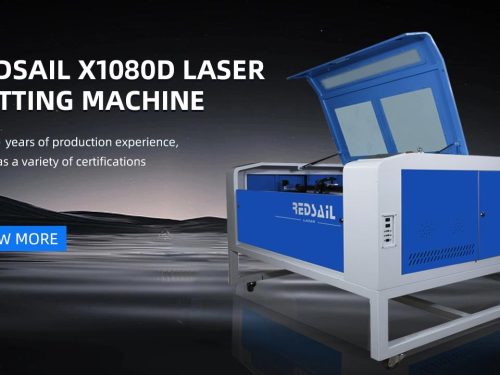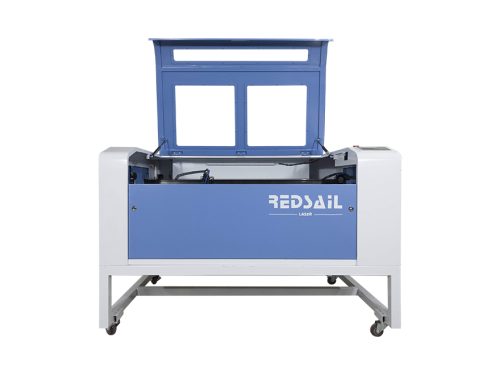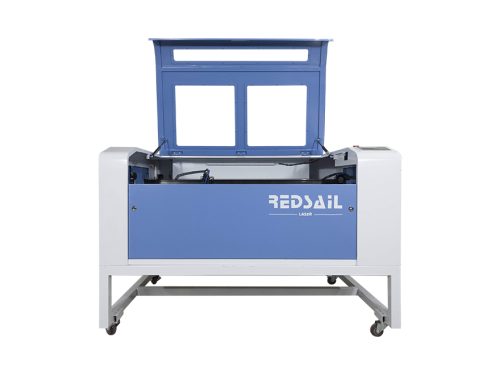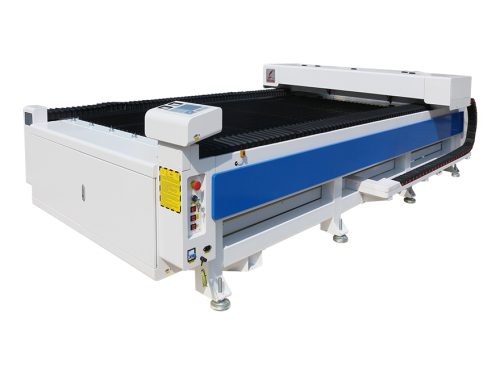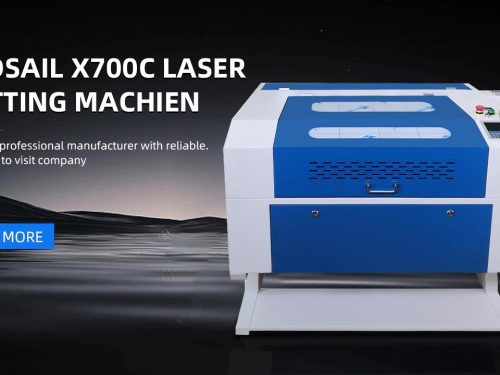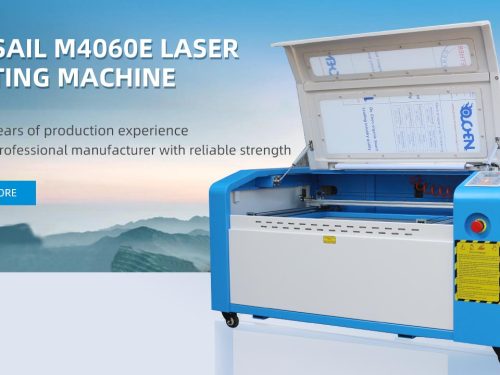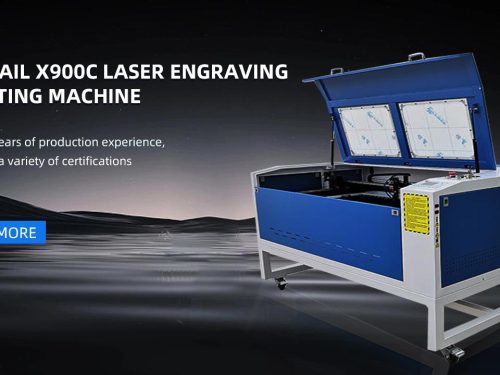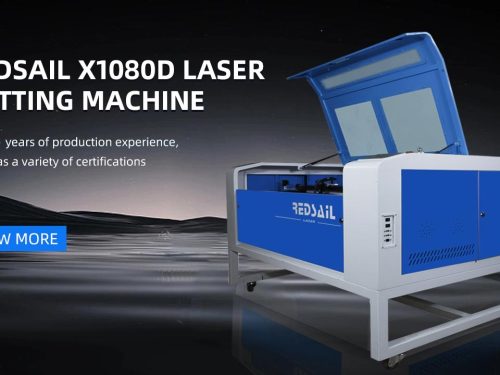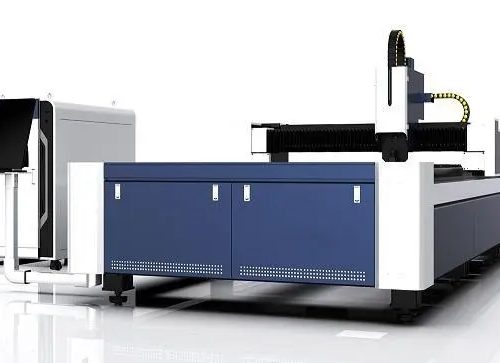
In our life, metal is a very common material. Gold, silver and copper are used to make coins, and iron is used to make tools and weapons. For this production link, there are many complex processes involved, but cutting is the most basic.
There are many ways to cut metal. The choice of cutting method depends on the type, thickness and quantity of metal to be cut, as well as the cutting quality you need. Today, high-energy laser will introduce us to the three most commonly used metal cutting machines: flame cutting machine, plasma cutting machine and laser cutting machine.
1. Flame cutting machine
Since the beginning of the 20th century, people have used fuel gas and oxygen to cut metals. Its principle is to heat metals through the chemical reaction between oxygen and steel, make them soft and finally melt. Best of all, the cost of the equipment itself is not high. In addition, you don’t need compressed air or electricity. Its disadvantage is that this method is only suitable for cutting carbon steel, while flame cutting is not suitable for other types of metals, such as stainless steel and aluminum. In addition, flame cutting requires high learning ability of operators, and requires a lot of practice, skills and experience to produce good cutting results. In addition, the cutting torch of flame cutting needs to be preheated. Like an oven, a cutting torch takes time to reach the proper temperature.
2. Plasma cutting machine
This is a high-speed method of cutting most common metals by precisely controlling the arc, which was invented in the 1950s. The small nozzle and high-speed gas flow can produce extremely hot arc with high energy density. Plasma cutting and gouging require process gas (such as air or nitrogen), power and consumables (including electrodes and nozzles). When people need to cut a series of different kinds of metals, plasma cutting is a good choice. In fact, this is the main selling point of plasma cutting: multi-function. It can cut most kinds of metals (low-carbon steel, stainless steel, aluminum, copper, brass, etc.), even rusty, painted or dirty metals. Plasma can also cut mesh like metal. In addition, it is equally good at cutting thick and thin metals. The disadvantage of plasma cutting is that its equipment cost is higher than that of flame cutting. Although the cutting quality is good and always stable, it is not as good as laser cutting when cutting thinner materials.
3. Laser cutting machine
Use high-energy beams to heat, partially melt, and vaporize metals. Laser cutting is famous for its fine quality of cutting thin metals. There are two main types of lasers: gas (CO2) and solid (YAG, DISC and fiber). Gas lasers can cut most kinds of metals, except for highly reflective materials. To do this, you need to use solid-state lasers, which have different transmission methods, so you can cut more kinds of materials. Laser is usually used for precision cutting or efficient cutting of very thin steel plates (up to 1/4 inch). A laser can cut metal more than an inch thick, but requires a more powerful laser. The disadvantage of laser cutting is that the initial equipment purchase price is very high. If we compare the laser system with a high-quality plasma system, the total cost of the laser system is very expensive. A traditional CO2 laser system costs hundreds of thousands of dollars. Fiber laser is cheaper than CO2 laser, but still more expensive than plasma.
Performance Comparison of Three Metal Cutting Machines with Different Requirements
If you compare the three cutting methods from the angle, notch, heat affected zone, chip and tolerance, laser cutting is usually better. Laser cutting has almost no slope, thin incision and small heat affected zone. In addition, laser cutting produces very little chip and provides strict tolerances. The cutting quality is closely followed by laser cutting, followed by plasma cutting, and finally flame cutting.
productivity
Cutting quality is an important consideration, as is productivity. After all, if you can’t achieve enough output to meet the demand, only good cutting quality does not make much sense. When people mention productivity, they usually think of cutting speed; However, there are other factors to consider. These factors include the time for the system to complete the cutting preparation, penetrate the metal and complete the secondary operation. Let’s start with the assessment of cutting speed. The speed achieved by the three methods depends on the thickness of the metal to be cut. Generally speaking, flame cutting is the slowest, plasma cutting is the fastest, and laser cutting is in the middle.
Knowing the cutting speed of each method will provide half the information for calculating the hourly workpiece output. The other half is the linear length of each workpiece to be cut. For example, a 12× A 12 inch square with a linear length of 48 inches (12× 4 sides) equals 4 feet. Once you have these two data, you can easily calculate the number of workpieces that can be cut.
The first thing you need to do is get the number of inches you can cut per minute and multiply by 60 to determine the number of inches you can cut per hour. In the following example, we assume that the flame cutting speed is 20 inches/minute or 1200 inches/hour (20× 60). Step 2 also includes dividing the number in inches/hour by 12 to determine the cutting speed in feet/hour. Finally, you can simply divide the cutting rate in feet/hour (100 in this example) by the size of the workpiece (4 feet). Table 1 shows the case just described and the calculation for different cutting methods.
As you can see from Table l, the number of workpieces processed per hour (144 workpieces) by high precision plasma cutting. However, as mentioned earlier, other factors also affect productivity, such as preheating and penetration times, and the time required for secondary operations, such as chip removal. Among the three methods, flame cutting requires the most time because it needs preheating.
running cost
In addition to cutting quality and productivity, you also need to consider the running cost of each method. In other words, how much does your chosen system cost to run? Many factors (the cost of consumables, electricity, gas, and replacement maintenance parts) affect the overall operating cost.
When plasma cutting is used, consumables account for the largest proportion of operating costs. However, the appearance of more durable consumables has changed this situation.
For flame cutting, the power cost can be ignored. Plasma cutting is higher, fiber laser cutting is higher, and CO2 laser cutting is even higher.
Due to the need for high-speed airflow, the gas cost is the largest cost of CO2 laser cutting.
CO2 laser cutting mainly needs to consider the replacement of parts. Although components such as lenses and mirrors do not change frequently, the cost of repair when they are damaged is high, including the purchase cost and the time cost of stopping to replace them. Therefore, you should include this part of the cost when calculating the daily operating expenses.
Calculate investment value
What can help you find out which different cutting method is more meaningful? Do you just need to go out and buy a new cutting system? not always. The first thing you need to verify is whether the special system you are considering is worth investing in. To do this, you need to determine the number of pieces you expect to produce each day and multiply this number by the expected profit for each piece (this will depend on the method you use).

